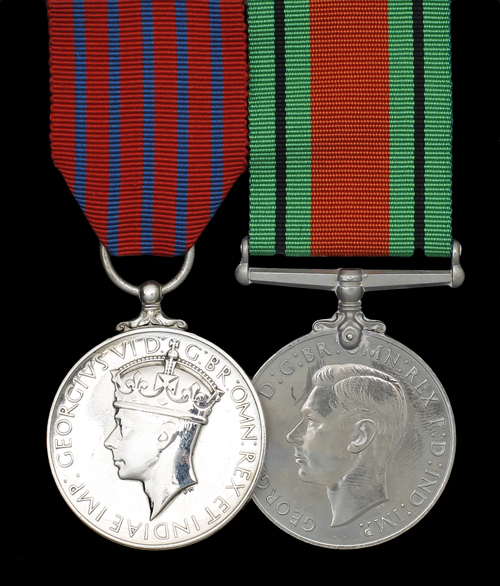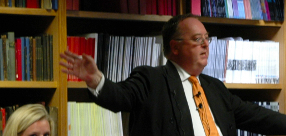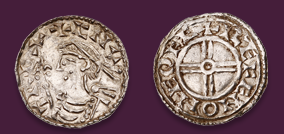
Auction: 1008 - Orders, Decorations, Campaign Medals & Militaria
Lot: 23
A Good 1940 ´Blitz´ G.M. Pair to W.T. Field, Leader A.R.P. Rescue Party, Bromley, Kent a) George Medal, G.VI.R. (Walter Thomas Field) b) Defence Medal, very fine, with a comprehensive file of research (2) Estimate £ 2,400-2,800 G.M. London Gazette 21.2.1941 Walter Thomas Field, Leader, A.R.P. Rescue Party, Bromley [in joint citation with Owen Edward Parsloe, Works Superintendent, A.R.P. Rescue Party, Bromley] ´Mr. Parsloe and Mr. Field accompanied a rescue party to a pair of semi-detached houses which had completely collapsed following the explosion of a bomb. On arrival it was learnt that there were six people in the house, two adults and four children. The first floor joists, with the debris from the roof on top, had fallen on to the occupants leaving a space of only two feet between the joists and the ground floor. The only means of entering was by tunnelling under the wreckage. Mr. Parsloe entered the tunnel, and both he and Mr. Field placed jacks in position in order to raise the debris. Little could be done, however, in this direction without throwing weight on to the head of a boy trapped on the bed. It did, however, assist in the rescue of a woman, whose legs were pinned under the bed. This was effected by cutting through the bedstead with a hacksaw. The release of the boy was much more difficult, and it was necessary for both Mr. Parsloe and Mr. Field to crawl in on their stomachs and release the springs of the mattress in order to effect a rescue from underneath. This, however, let loose other debris. Field managed to wriggle through to the head of the bed and clear away the heap of bricks and plaster. A great risk was taken in carrying out this work as the joists supporting the wreckage appeared to be held up by the rubble. Field had to carry out the work, assisted by Parsloe, lying full length. Ultimately the child´s head was freed, and he was pulled out by the ankles without any injury. The work took about three hours, and owing to the precarious support of the debris over the tunnel, and the shattered condition of the party wall, there was danger through-out the whole operation of the persons working therein being buried.´ A Statement given by Parsloe gives further details: ´A call was received on the night of Saturday, October 26th [1940] asking for a Rescue Party to be sent to Hayes Lane. Mr. Field and I took No.7 Party, and upon reaching the site found the house No.214 had been totally demolished by a H.E. bomb which had fallen into the front garden. I contacted the Warden and learnt from him that six bodies were buried beneath the debris. On inspection I found that the bedroom floor had collapsed and fallen, and the roof had fallen with it but it was still possible to enter the dining room from the back. A little way in the room the ceiling had dropped down to within about two feet of the floor, and the only means of entering was by a tunnel formed by the ceiling resting on an iron bedstead. I was able to see two bodies, one of a child in a bed, and the other a woman lying on the floor. They were both alive and able to tell me which part of their body was trapped. I could also hear a child crying further in the wreckage but was unable to see it. By this time Mr. Field had joined me and together we quickly decided upon the best method of procedure. The first thing to do was to jack the ceiling up. When the jacks were in position I found it was possible to raise them as the least movement of the ceiling would have thrown the weight on to the boy´s head. The woman´s legs were pinned under bed and could only be released by the bed being lifted. With the aide of a hacksaw the bed was cut through, and this enable us to lift the bed sufficiently to free the trapped man. The task of freeing the boy was much more difficult, as the ceiling was resting on his head but only just touching him. Mr. Field crawled in on his stomach to work at the child´s head, and I was obliged to lie on Field´s legs. We found that the bed was a sprung one and so we released the spring hoping thereby to lower the body. We did not succeed as the boy immediately cried out saying we were hurting his head. At very great risk to himself, Field wriggled his body to the head of the bed and found that the pain was being caused by a heap of bricks and breeze which were pressing against the child´s head. To remove this a great risk had to be taken as the joists appeared to be resting on and held up by the rubble. Field carefully removed all he could reach, and here I would like to point out that at no time was he even able to kneel up, the ceiling being so low and I, by lying on my back across the bed was just able to release the bricks which he could not reach. It was at this point that I discovered that all the joists were away from the wall, and all the weight was being supported by the head of the bed. Eventually, the child´s head was free, and by grasping his ankles and pulling gently we were at last able to free him. He was handed to the Stretcher Party, and did not appear to be much worse for his terrifying experience. The mother had told us that three other children were in a farther room, but we could only hear one of them. Field tunnelled further in but found it was an almost impossible task to penetrate as the debris was so great. He worked hard but found he could make little headway as he could only move one brick at a time and hand it to me. As we were both lying on our backs it was a hopeless task so other means had to be sought. I had sent for No.2 Rescue Party, and put them to work clearing the debris from the top hoping to get down to the bed from above. The child´s cries were by now very feeble and so I decided that our only hope was in getting through the wall from the adjoining room of the house next door. The wall was very unsound but it held, and we were able to get a hole through. By this time the child´s cries had ceased but fortunately we could see part of a blanket under about three feet of loose soil and debris. This was soon clear and we could see the blanket move as the child breathe. After some difficulty we were able to locate the child´s head and able to get him through the hole in the wall. A broken gas pipe ran along the side of the bed, and if he had been there a few minutes longer I am afraid he would have died of gas poisoning. It was obvious to me that any further bodies buried in this room could not possibly be alive so I gave the instructions to No.2 Rescue Party to work through the top and as there was not sufficient for two parties I sent No.7 back to the Depot. The recovery of the three casualties had taken us three hours. I relieved No.2 Party shortly afterwards with No.8 and after about an hour´s work the dead body of a little girl was found. Owing to the darkness No.8 Party returned to the Depot at about 4 a.m. and proceeded again to the incident at day-break. In a short time the bodies of a man and a boy were found, and from the injuries apparent to us it was obvious that death must have been instantaneous.´ Walter Thomas Field, G.M., ´of 14, Greenway, Bromley, known as "Sonny", is depot superintendent under the Bromley Corporation and leader of an A.R.P. rescue party. Mr. Field has had a distinguished career in many branches of sport. After serving for a number of years in the Navy [entitled to a Great War Pair]; he qualified as a physical training instructor. He has had considerable success as a fencer, swimmer and athlete. On leaving the Navy in 1928, Mr. Field took over the position of attendant at Bromley Open-Air Swimming baths. He has acted as trainer to Bromley Swimming Club, and instructor to Bromley County Schools. He has also taught gymnastics in the district. In 1939 he became trainer to the Bromley Football Club. A keen cricketer, he performed a great feat in the 1938 season, when he took 220 wickets. He received invitations from Kent and Essex to play in trial games, but declined them as he felt he was too old to take up County Cricket, being nearly 40.´ (Bromley & West Kent Mercury, 28.2.1941, refers).
Sold for
£3,400




